
Today I would like to take some time to introduce you to the Final Five The finalists in the MAD Blog Awards For Best Pregnancy Blog I think to most people they will need no introduction The Final Five! Circus … Continue reading
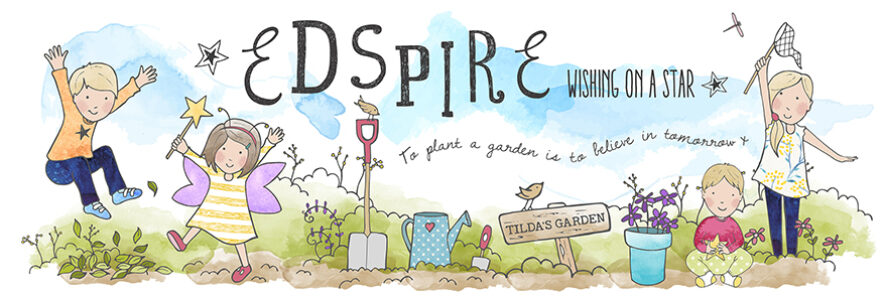

Today I would like to take some time to introduce you to the Final Five The finalists in the MAD Blog Awards For Best Pregnancy Blog I think to most people they will need no introduction The Final Five! Circus … Continue reading
I have a confession to make
I was too scared to ask
I should have been braver
I will have a private scan at 23 weeks
I will ask my kind doctor then
I should not have been too scared
I should have been braver
I should have asked
I am honoured to have Niki Cunningham here from the Harry Cunningham Trust to tell you why
Harry was expected to be a very happy and healthy baby, it was only during his delivery that things started to go wrong for him. I had a condition which had gone undiagnosed during the pregnancy , called vasa praevia. This is when the umbilical cord inserts itself into the placenta in a way that is not usual. It looks like a spiders web of veins, that are exposed and unprotected, unlike a normal cord and placenta where the veins are protected by a special jelly. This spiders web of unprotected veins grows over the exit point of the womb, the cervix, and when the mother’s womb begins to contract during labour and squeezes around the baby’s head it causes the exposed veins to rupture, and by the time this is discovered it usually has catastrophic results for the baby.
In Harry’s case, the bleed went undiscovered for four hours and when he was delivered he had lost such a lot of blood. It took the team at RD&E hospital 25 minutes to resuscitate Harry, by which time he was severely brain damaged and suffered multiple organ failure.
We spent a very precious and memorable 26 hours with our little boy, but by this time the staff in the neonatal unit had explained to us that there was no more they could do for Harry and we made the hard decision to withdraw his treatment and say goodbye to our little boy in the arms of his mummy.
When I discovered that this condition can be easily diagnosed during routine ultrasound appointments, but isn’t it broke my heart. I vowed I would do all I could to make sure other babies weren’t lost to this condition, and have since been working with the NHS National Screening Committee to roll out a nationwide screening programme at the 20 week anomaly scan to include vasa praevia for “at risk” mothers.
The scan takes literally a couple of minutes as a part of the anomaly scan, where the sonographer checks the position of the placenta and uses a colour Doppler to check the blood flow through the placenta and the cord. If it appears to cross over the cervix, then the sonographer would do a vaginal scan to get a better view and rule out vasa praevia. If vasa praevia was diagnosed, then a management plan of bed rest and a planned caesarean section around 34-36 weeks (to avoid membranes rupturing spontaneously) would be put in place and this results in a 95% survival rate.
Vasa praevia is as common as Downs and this screening process is far less invasive, and can ultimately save a babies life.
It is not currently screened for routinely, so please tell anyone you know who is expecting a baby to ASK ABOUT VASA PRAEVIA AT THEIR 20 WEEK SCAN. Don’t say goodbye to your baby, so quickly after saying hello. It can be prevented, so easily.
More information on vasa praevia can be found at http://www.harrycunninghamtrust.co.uk/about-vasa-praevia.php
Harry’s Story can be found at: www.missingharry.blogspot.co.uk
I am going to ask for this simple check at my next scan
Thanks to Niki and to Harry
Will you?
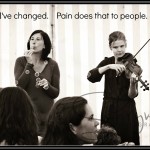
Mothers’ Day is looming This weekend it will be here For many a day of joy and celebration A day many dread and fear I am a mother myself I have a mother of my own I have an amazing … Continue reading
In my second post for Jennie’s #musicplay series, I will walk you through what a Classical Babies concert looks like and I thought I might elaborate a bit on just what I believe makes classical music so great for children.
[Before I do, though, a quick disclaimer: I am not a musicologist, a scientist, or a child development expert. I’ve read a lot of research from people who are but even some of that I haven’t known whether to believe! My writing about music is coming from a weird melée of nearly thirty years’ experience learning and playing instruments and listening to classical music, teaching, being a mother and reading and absorbing articles on the so-called Mozart-effect and more expansive research, my own instincts and the evidence before my own eyes of four years’ worth of Classical Babies concerts, watching the children grow and take up instruments. Some of it is pure gut instinct and some of it logic but my hope is that it will convince you to saturate your child’s life in music of all kinds including classical!]
So, soon after my string quartet performance for my friends and their babies in my living room, I put on my first commercial concert in a rented venue, a big hall in the O2 Centre, Finchley Road NW3. I was pretty gobsmacked when over thirty mums turned up with their babies!
The idea is to bring classical music out of the concert hall to the mums in their own local environment in a totally informal and relaxed way. We let them bring their buggies in and put down soft flooring, blankets and toys for the little ones to be comfortable:
We lay on coffee and cake for the mums to enjoy during the performance…
…. and then the music begins!
We vary the instruments from concert to concert, from string quartets and wind trios to cello and piano and sopranos… If you come to enough concerts you should get a taste of everything eventually!
After about 40 minutes of music, we have mini-instrument sessions – usually violin, although sometimes piano or cello – where we encourage all the babies and toddlers to touch and try smaller-sized instruments.
Some of the children (and their parents) are amazed at how well they do and get really excited. Some of these babies have later gone on to learn the violin with me or take up other instruments. A number of my 5-year-old pupils who used to come to Classical Babies concerts as babies, are now playing scales and pieces so beautifully and I love teaching them because it seems to come so easily to them. It depends on the child of course, but I believe that seeing and hearing musicians play, up-close so often at the concerts has helped them learn through osmosis and that their brains have been soaking up subconsciously how to do it through watching and listening so early on their lives when their brains are like little sponges!
But why encourage a child to take up a musical instrument? So they can be a prodigy, or grow up to be a professional musician? No! Well… I mean, if that happens it’s clearly meant to be, so go with it! But multiple research findings have shown that the benefits of learning an instrument continue into adulthood, regardless of whether the person has long since given-up. The more proficient the player then the more pronounced the effects on the brain, but any time spent learning is better than none. [LA Times: http://articles.latimes.com/2012/aug/21/news/la-heb-mental-benefits-music-lessons-20120821]
Learning an instrument requires, in no particular order: coordination, fine motor skills (I mean very fine: not just good enough to dress yourself; rather, good enough to perform laser eye-surgery or something – though with less serious consequences if you get it wrong, thank God! 😉 ) and fast reflexes (set your stop-watch going on your phone and watch the milli-seconds fly-by – it’s still slower than the top speed on my metronome). Learning music aids literacy, not just through recognition of the notes, but by learning musical terms in several other languages. It develops maths skills – through deciphering rhythms and breaking musical beats up into various fractions of varying complexity.
(Though how I can work out stuff like this instantaneously:
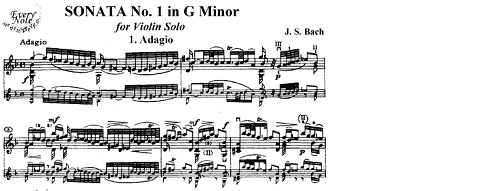
yet not work out 15% of a restaurant bill will always remain a mystery.]
Music is physical, mental and emotional, using the whole brain and the body. When you play music you are not only producing but also receiving sounds at the same time, both creating a sound and constantly listening to and assessing it a split-second after you physically made it, while already making the next movement to produce the next sound… (not as easy as it sounds and using two distinctly different locations in the brain).
It’s also immensely creative. A musician is really an artist who paints in sound, with as many different colours and sound-textures available as there are colours in the world and is endlessly identifying, crafting and conveying emotions through sound. I know there is so much made in the media of the intellectual benefits of music, as if high I.Q. test scores and academic achievement were the height of every parents priority list, but for me, it’s the emotional intelligence and social benefits of making music that I care most about and that make me the most passionate advocate of classical music.
The discipline, patience and perseverance you develop through sticking with an instrument for any length of time is a fabulous set of life-skills for any child to develop, but most wonderfully of all, for me is the way playing music touches our sense of the infinite, the unseen in the Universe and in us and also encourages us musicians to bond with others who recognise it too. To play music, in a duo, an orchestra, a band or any kind of group requires humans to be so sensitive, open and giving and observant of those around them, picking up such tiny subtle body-language signals to play in time together, with the same sound, the same length of articulation or any other number of things. It is the greatest art of collaboration I’ve ever experienced in my life and the greatest joy. THIS… this… has to be one of the greatest gifts you can give your child and a skill that will take them far in any walk of life or profession!
So, let your child grow-up with music around them, with classical, jazz, pop, literally anything that makes their hearts sing and let them see, touch, hear instruments of all kinds and if they want to learn, don’t assume “It’s just a fad, it won’t last!” You never know, you might so enjoy seeing them learn you want to learn too… It’s never too late!
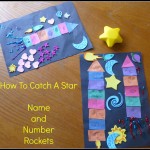
In the Oliver Jeffers’ story How To Catch A Star A little boy is trying to catch a star of his very own He thinks about flying up to the sky in his rocket Only, it ran out of petrol … Continue reading
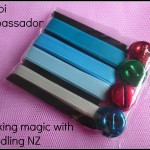
We have been making magic! Matilda Mae magic with the help of Asobi and new creative children’s company Seedling. We are proud and delighted to announce that we are an Asobi Ambassador and will be working closely with them to … Continue reading

Today is the very last day that you can order a personalised Peppa Pig book for Mothers Day from Penwizard Penwizard make your children the stars of their very own books featuring some of their favourite Tv and story characters … Continue reading
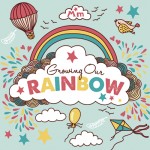
Yesterday we had our 20 week anomaly scan We had agreed that after this scan If all was well We would tell Esther and William About the baby Yesterday passed And we did not tell them This morning I took … Continue reading

It is a 40 minute drive From our house to the hospital Today David and I chatted a little And then I had flashback after flashback Of our daughter Matilda Mae Being pregnant with her Being with her Being without … Continue reading

Sitting Sinking Sad Spot a star Never seen before Has it always been there? On the old wooden gate Is it a sign? Anomaly scan Terror Pain Even if everything is perfect Perfect fingers, perfect toes Everything in place Exactly … Continue reading